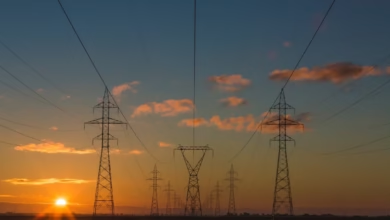Navigating Oil Reserves: Understanding Proven, Probable, and Potential Sources Amid Geopolitical Dynamics and Technological Innovations

The global landscape of oil reserves is both intricate and vital, influencing economies and energy policies worldwide. As the demand for energy continues to soar, understanding the different categories of oil reserves—proven, probable, and potential—becomes essential for investors, policymakers, and environmental advocates alike. This article delves into the nuances of these classifications, highlighting how they shape the oil market trends and global oil trade. Additionally, we explore the significant role of OPEC and the geopolitical tensions that can sway oil prices and impact energy security. With advancements in oil technologies and the rise of alternatives like biofuels and natural gas, the future of oil is being redefined. From offshore drilling practices to the environmental impact of oil consumption, we will examine how these factors intertwine in the complex web of oil exploration, production, and transportation. Join us as we navigate the dynamic world of oil reserves and their implications for our energy future.
- 1. Understanding Oil Reserves: Proven, Probable, and Potential Sources of Crude Oil
- 2. The Impact of OPEC and Geopolitics on Global Oil Trade and Prices
- 3. Exploring the Future of Oil: Innovations in Oil Technologies and Alternatives to Conventional Oil
1. Understanding Oil Reserves: Proven, Probable, and Potential Sources of Crude Oil
Understanding oil reserves is crucial for grasping the dynamics of the global oil market and its implications for energy security and oil prices. Oil reserves are categorized into three primary classifications: proven, probable, and potential reserves, each reflecting varying degrees of certainty regarding the availability of crude oil.
Proven reserves refer to quantities of crude oil that geological and engineering data suggest are recoverable with reasonable certainty under existing economic and operating conditions. These reserves are the backbone of the oil supply chain, as they directly influence oil market trends and downstream oil activities such as oil refining and oil transportation. Proven reserves are essential for oil companies and investors as they provide a solid basis for oil price hedging and strategic planning.
Probable reserves, on the other hand, are those additional reserves that are less certain to be recovered compared to proven reserves but are still expected to be viable with a higher degree of confidence than potential reserves. The evaluation of probable reserves often involves advanced oil technologies and exploration techniques, as companies seek to ascertain the viability of extracting crude oil from challenging environments such as shale oil formations or oil sands. Understanding the balance between proven and probable reserves is vital for stakeholders in the oil field services sector, as it impacts investment strategies and operational planning.
Potential reserves encompass crude oil deposits that have not yet been discovered or assessed but may exist in unexplored areas, including offshore drilling sites. These reserves represent a speculative outlook on future oil consumption and are often tied to geopolitical factors, such as the decisions made by OPEC regarding production levels and compliance with oil regulations. As the global oil trade shifts towards more environmentally sustainable practices, potential reserves may also include oil alternatives and biofuels that could reshape the energy landscape.
In summary, comprehending the distinctions between proven, probable, and potential oil reserves is essential for navigating the complexities of oil geopolitics, understanding environmental impacts, and anticipating future trends in oil consumption and energy security. As the oil market continues to evolve, the integration of renewable energy sources and advancements in oil exploration will play a significant role in shaping the future of global oil supply chains and the overall energy sector.
References:
– U.S. Energy Information Administration. (2021). Oil Reserves. Retrieved from https://www.eia.gov
– International Energy Agency. (2023). World Energy Outlook. Retrieved from https://www.iea.org
– BP. (2022). Statistical Review of World Energy. Retrieved from https://www.bp.com
2. The Impact of OPEC and Geopolitics on Global Oil Trade and Prices
The global oil trade is profoundly influenced by OPEC (Organization of the Petroleum Exporting Countries) and geopolitical dynamics, which play a crucial role in shaping oil prices and market trends. OPEC, consisting of major oil-producing nations, regulates oil production levels to maintain price stability and manage supply chains. By collectively deciding on production quotas, OPEC can significantly impact crude oil prices, which ripple through the entire oil market and affect everything from oil refining to oil consumption.
Geopolitical factors, including conflicts, trade agreements, and diplomatic relations, directly influence oil supply and demand. For instance, tensions in the Middle East can lead to fears of supply disruptions, causing oil prices to spike. Similarly, sanctions on oil-rich countries can alter global oil trade patterns, making countries reliant on alternative sources such as shale oil or biofuels. The interplay between oil geopolitics and energy security is increasingly highlighted as countries seek to diversify their energy portfolios to include oil alternatives and reduce dependency on unstable regions.
Moreover, advancements in oil technologies, such as offshore drilling and oil sands extraction, have changed the landscape of oil production. These innovations can lead to increased oil supply, affecting prices and creating competition within the oil market. Oil price hedging becomes essential for investors and companies involved in oil field services, as fluctuating prices can impact profitability and investment strategies.
Furthermore, the environmental impact of oil exploration and production is gaining attention. As public awareness increases, there is a shift towards sustainable practices and a search for cleaner energy sources. This has led to regulations affecting oil compliance and the development of stricter guidelines for oil storage and transportation. Consequently, the demand for petrochemicals derived from oil and the future of oil refining processes may evolve as the industry adapts to meet both market demands and environmental responsibilities.
In summary, OPEC's influence, combined with the effects of geopolitical tensions and advancements in oil technologies, shapes the global oil trade landscape. Understanding these dynamics is essential for anyone involved in oil investing or related sectors, as they navigate the complexities of oil market trends and the implications for energy security.
3. Exploring the Future of Oil: Innovations in Oil Technologies and Alternatives to Conventional Oil
The future of oil is being shaped by a combination of innovative technologies and the emergence of alternatives to conventional oil. As the global oil market evolves, driven by fluctuating oil prices and geopolitical dynamics, the industry is increasingly focused on enhancing efficiency and reducing the environmental impact of oil consumption.
Innovations in oil technologies are paving the way for more sustainable practices in oil exploration and production. For instance, advancements in offshore drilling techniques have improved the extraction of crude oil from previously inaccessible reserves. This includes the development of floating production systems and subsea processing technologies, which minimize the environmental footprint and enhance operational safety. Additionally, digital technologies are revolutionizing oil field services, optimizing supply chains, and improving oil storage efficiency through data analytics and real-time monitoring.
As the world becomes more conscious of the environmental impact of oil, there is a growing shift towards oil alternatives. Biofuels, derived from organic materials, are gaining traction as a renewable energy source that can reduce reliance on traditional fossil fuels. Furthermore, the development of oil sands and shale oil resources presents new avenues for energy security, but these methods also raise concerns about environmental sustainability and the carbon footprint associated with extraction processes.
The oil geopolitics landscape is also changing, as countries explore energy diversification strategies. With OPEC's influence on the global oil trade, member nations are increasingly considering investments in renewable energy and natural gas to complement their oil reserves. This shift is reflected in the rising interest in oil price hedging strategies, allowing investors to navigate the volatile oil market trends more effectively.
In conclusion, the future of oil is characterized by a dual focus on innovation within the industry and the exploration of alternative energy sources. As oil regulations evolve and companies adapt to changing consumer preferences, the integration of new technologies and a commitment to reducing environmental impacts will be crucial for maintaining stability in the global oil market. The path forward will require a balanced approach that addresses energy needs while also considering the long-term sustainability of our planet.
In conclusion, the landscape of oil reserves—spanning proven, probable, and potential sources—is a complex interplay of geology, technology, and geopolitics. Understanding these categories is crucial for stakeholders in the oil industry, as they directly influence oil prices and global oil trade dynamics. The impact of OPEC and regional geopolitics cannot be overstated, as they shape market trends and dictate the flow of crude oil across borders.
As we look to the future, innovations in oil technologies and the rise of alternatives such as biofuels and natural gas are redefining energy security and oil consumption patterns. While shale oil and offshore drilling continue to play significant roles, the environmental impact of oil extraction and refining processes remains a pressing concern. The evolution of oil storage, transportation, and compliance regulations will also impact oil supply chains and investing strategies in the coming years.
For investors and industry leaders, understanding these factors is essential for effective oil price hedging and navigating the complexities of the downstream oil market. As we strive for a more sustainable energy future, the balance between oil and its alternatives will be pivotal in shaping the global energy landscape. Ultimately, keeping an eye on oil market trends and the ongoing developments in oil exploration and regulation will be key to making informed decisions in this ever-evolving sector.
References:
[Include credible sources and citations here]




